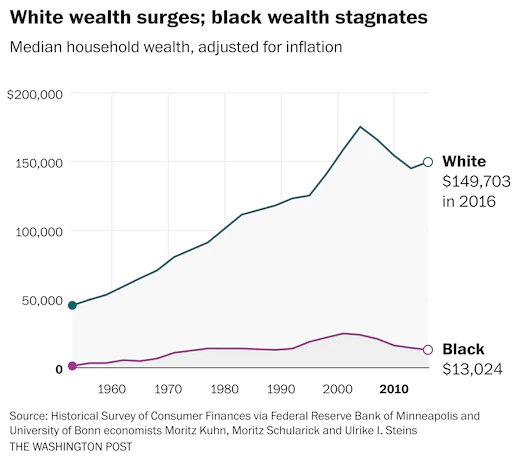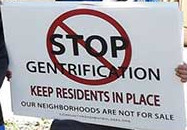See Dr. Golash-Boza’s expert testimony as certified by the DC Zoning Commission:
- MU10 displaces Black communities in DC (click here, start at page 4)
- MU10 won’t deliver truly affordable housing at levels of affordability that will make any meaningful difference especially to DC’s Black families or any individuals making less $60,000 annually (click here)
- MU10 is harmful — the solution is a Special Purpose zone (click here)
The Office of Planning (OP) and Deputy Mayor’s Office of Economic Development (DMPED) rely on Comp Plan policies touting “affordability” and “affordable housing” to support their proposal to remap 1617 U Street NW from an MU-4 zone district to a MU-10 zone district.
The Commission must deny the MU10 remapping application in light of the evidence below, among many other contested issues raised on the record so far.
In the face of the affordable housing crisis, more luxury housing would be born from the proposed MU10 remapping
The Applicant and other supporters of the remapping application reference the law that would require 30% of the housing units built at 1617 U Street NW as “affordable.” This means 70% of the units would be unaffordable luxury market-rate housing on public land.
If the Applicant believes about 200 units would be affordable, this means more than 400 units would be market rate units in any project born of the MU10 remapping.
Despite affordable housing’s scarcity in DC, the overall supply of rental housing is increasing at a record pace however the increased supply is vastly overweighted to the most expensive units.
The public is tired of #BuildingAsUsual and demand no more giving away of public land and public air rights for more luxury housing!
- Webpage, “Rent Growth in Four- and Five-Star Apartments Reflect Roller-Coaster Ride of Supply and Demand, High-End Properties Led Multifamily to Record Rent Growth, but That’s Now Slowed”, Costar Insight, https://product.costar.com/home/news/shared/1791713599
The Touted Affordable Housing Isn’t Affordable (Especially for Black DC Residents)
DC’s premier affordable housing program, Inclusionary Zoning (IZ) is based upon the annually increasing Area Median Income (or Median Family Income).
Last year, the Area Median Income (AMI) for a single household is $100,000/yr (for a household of four, its $142,000/yr). https://dhcd.dc.gov/node/1604746
Since, DC’s “affordability” is based on the AMI, and the AMI keeps going up every year, DC’s affordable housing becomes less and less affordable annually.
For example: In 2017, a single person household could be making between $47,000 and $61,000 per year could qualify for one of DC’s “Affordable” studio/one bedrooms. Now in 2022-23, a single household (an individual) making $60,000 to $80,000 per year could qualify for an “Affordable” housing unit in DC.
- See ZC Case No. 23-02, Exhibit No. 558, at page 4.
DC’s current minimum wage is $17/hr which equates to about $33,000/yr. Thus DC’s affordable housing is simply not affordable for most working DC residents, especially Black DC residents due to the immense racial wealth gap.

- Washington Post Analysis, Economy, “The black-white economic divide is as wide as it was in 1968, Economy” By Heather Long and Andrew Van Dam, dated June 4, 2020, “… [T]he gap between the finances of blacks and whites is still as wide in 2020 as it was in 1968, when a run of landmark civil rights legislation culminated in the Fair Housing Act in response to centuries of unequal treatment of African Americans in nearly every part of society and business.”
- Article, “Census: In D.C., Black Median Income Is Now Less Than a Third of White Median Income And other surprising highlights from the latest U.S. Census data” by Andrew Giambrone September 15th, 2017, Washington City Paper.
Inclusionary Zoning Program Cannot Be Relied Upon in Any Comprehensive Plan Consistency Tests or Policy Balancing
The Applicant has cited Inclusionary Zoning (IZ) and IZ+Plus as a key benefit as to why ZC Case 23-02 and remapping to MU10 should be approved. Given the historical failure of IZ, the arguments for more luxury and a small slice of “IZ” units is without merit.
In the past ten years of DC’s premier affordable housing program, Inclusionary Zoning (IZ), the program has produced less than 2000 housing units and most of them studio/one bedrooms for single professionals making about $80,000 annual income.
- Report, DC Mayor Muriel Bowser, “Inclusionary Zoning Annual Report for Fiscal Year 2021” dated January 9, 2023, https://lims.dccouncil.gov/downloads/LIMS/52021/Introduction/RC25-0002-Introduction.pdf
To contrast, the families and individuals making the minimum wage in DC will earn about $35,000/yr and there are 40,000 DC people/families on the housing wait list seeking affordable housing.
- Article, “D.C.’s inclusionary zoning program not benefiting lowest-income households, report finds” by Tristan Navera, February 6, 2023, Washington Business Journal.
Thus the Applicant may attempt to cite to Comp Plan policies they suggest this MU10 remapping application fulfills, however, Commissioners cannot rely on cited Comp Plan policies in words only.
Rather, ZC conclusions must flow from actual facts to conclude whether any balancing and consistency tests are actually supported by weigh-able evidence, results, and substantial facts. The facts above show, MU10 remapping results in a net harm to Black DC residents.
The result of more luxury housing in DC has been the abject displacement of tens of thousands of DC’s working-class residents and families
In the past ten years of substantial market-rate housing production, Ward One has lost another 25% of our Black friends, neighbors, and families (~~19k people). This level of gentrification is brought on by the luxury over development that drives up land values, taxes, and thus housing costs.

- Webpage, 2020 Census Information and Data, DC Office of Planning website, and on that page find the Office of Planning spreadsheet showing the Ward-level displacement matrix above.
- Opinion, “There can be no racial equity in D.C. when Black and Brown families are being displaced” by Minnie Elliott on March 5, 2021, in the Washington Post.
“The most destructive force to strike my native District of Columbia in my lifetime has been displacement: the forced removal of Black families and their community-binding activities and institutions from areas such as the Foggy Bottom and West End neighborhoods of Northwest D.C. and the southwest side of town. Displacement of thousands from places they had lived for generations to make room for new housing, better buildings and ultimately more affluent and privileged people.”
- Opinion, “D.C. shoved Black neighborhoods aside. It’s still paying the price” by Colbert I. King, published in the Washington Post on January 19, 2024, https://archive.ph/5gxwK
The city’s “poor folk [are being forced] out of their neighborhoods” by the city’s “active role in development, selling or leasing publicly owned land, changing zoning laws, closing alleys and providing developers with inducements to construct new — or refurbish old — buildings … with resultant racial and class tensions.”
- Opinion, “Quit the posturing in the Banneker-Shaw school dispute” by Colbert I. King on May 24, 2019 in the Washington Post, https://archive.ph/OSHig
There are alternatives to #BuildingAsUsual on public land — See Social Housing!


Leave a Reply